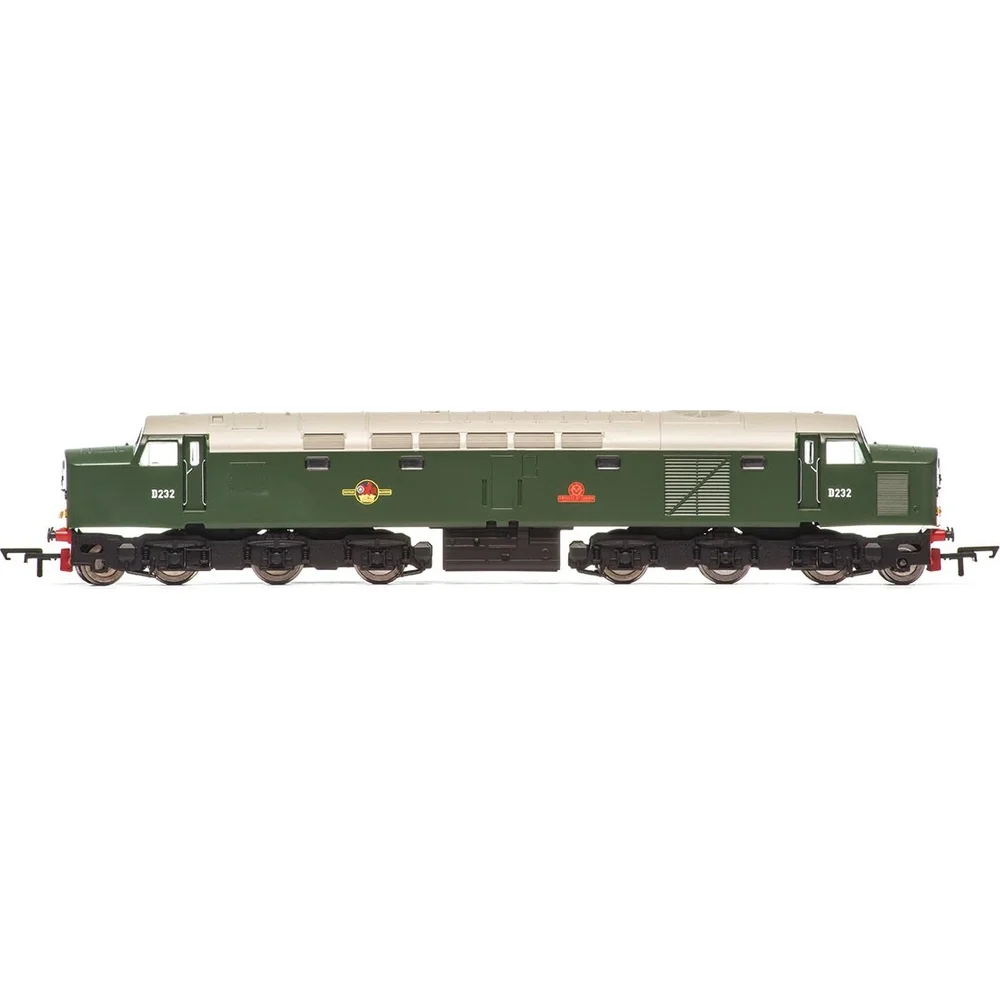Hornby R3286TTS
British Rail Class 40 D232 Empress of Canada British Railways Green with Late Crest
Class & Prototype
- Class: British Rail Class 40
- Traction: Diesel
- Transmission: Electric
- Built: 1958-1962
- Total Built: 200
- Running Number: D232
- Name: Empress of Canada
British Rail Class 40 "Whistlers" were iconic diesel-electric locomotives that pioneered Britain's transition from steam to diesel traction between 1958-1985. Built by English Electric with distinctive turbocharger whistles and 2000hp engines, these 200 locomotives initially worked prestigious services like the Flying Scotsman before settling into secondary passenger and freight duties. Their conservative engineering prioritized reliability over power, leading to eventual displacement by more capable designs. Seven locomotives survive in preservation, while excellent model representations from Bachmann, Graham Farish, and Heljan serve railway modellers across all scales. The class remains beloved for its pioneering role, distinctive sound, and elegant styling that defined the early diesel era.
Operator & Livery
- Operator: British Railways
- Livery: Green with Late Crest
- Era: 5 - British Railways Late Crest
British Railways transformed Britain's fragmented rail network into a unified national system following nationalisation on 1st January 1948. Created from the "Big Four" companies under the Transport Act 1947, BR operated most of Great Britain's railways until rebranding as British Rail in 1965, managing over 20,000 route miles and inheriting nearly 20,000 locomotives of diverse designs.
The organisation pioneered standardisation through its revolutionary BR Standard locomotive programme (1951-1960), producing 999 advanced steam engines under Robert Riddles' direction. These included the versatile Britannia Pacifics, mighty 9F freight engines, and mixed-traffic classes that incorporated the best features from all predecessor companies. The 1955 Modernisation Plan accelerated diesel and electric traction development, creating fascinating mixed-traction operations.
Notable achievements included establishing unified locomotive classification systems, introducing distinctive corporate liveries, and managing the complex transition from steam to modern traction. BR's six regional structure preserved operational diversity whilst enabling standardisation of practices, signalling, and rolling stock that had eluded private enterprise for over a century.
The BR era represents steam traction's final flowering alongside emerging diesel technology, creating unparalleled locomotive variety. Today, this heritage remains highly popular with railway enthusiasts through extensive preserved fleets, heritage railway operations, and comprehensive model ranges from manufacturers like Hornby, Bachmann, and Dapol, making BR subjects essential for authentic post-war British railway modelling across all scales.
